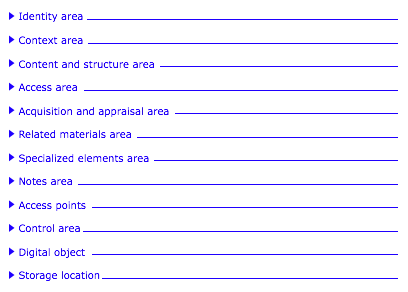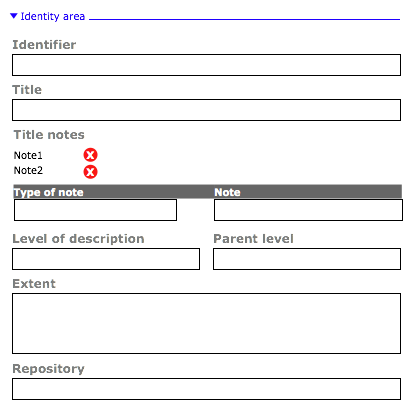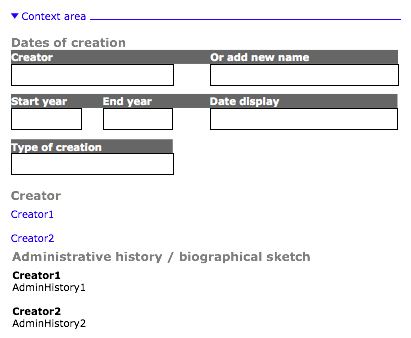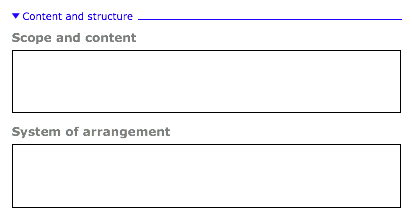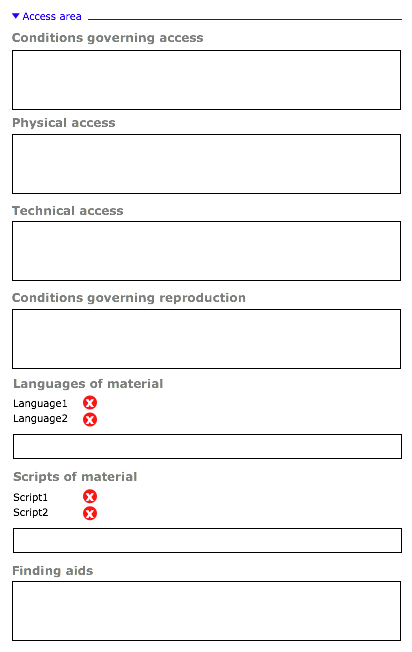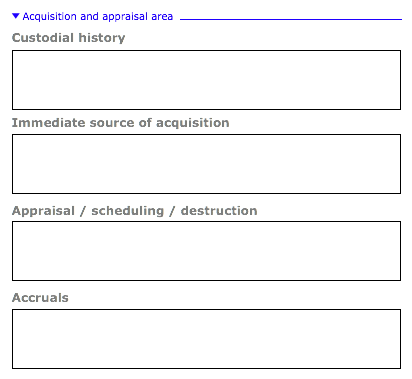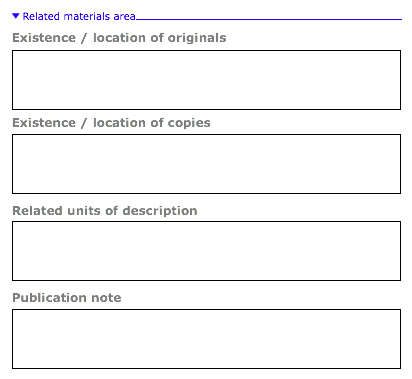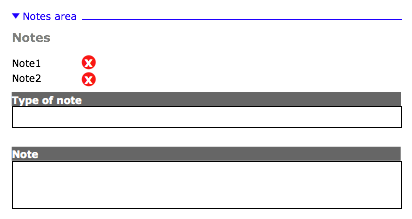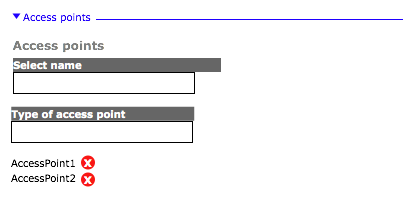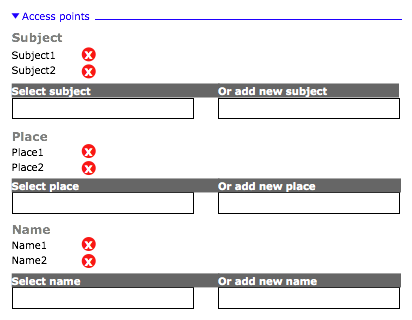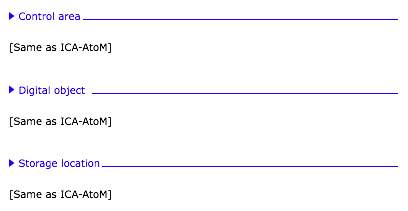Difference between revisions of "Template:RAD2"
| Line 108: | Line 108: | ||
== Access points == | == Access points == | ||
| − | [[Image: | + | [[Image:tmplRAD2AccessPoints1.png|500px|right|thumb|Access points]] |
| + | |||
| + | [[Image:tmplRAD2AccessPoints2.png|500px|right|thumb|Access points]] | ||
<br clear="right"> | <br clear="right"> | ||
| + | |||
== Control area / Digital object / Storage location == | == Control area / Digital object / Storage location == | ||
[[Image:tmplRAD2Common.png|500px|right|thumb|Control area / Digital object / Storage location]] | [[Image:tmplRAD2Common.png|500px|right|thumb|Control area / Digital object / Storage location]] | ||
Revision as of 17:06, 11 September 2008
Please note that ICA-AtoM is no longer actively supported by Artefactual Systems.
Visit https://www.accesstomemory.org for information about AtoM, the currently supported version.
Main Page > BCAUL pilot project > Templates
RAD2 templateDocument status: in progress
|
Contents |
Overview
The purpose of this template is to provide an interface for archival description that follows the draft RAD2 (Rules for Archival Description, 2nd edition). This draft was prepared by the CCA's Canadian Committee on Archival Description circulated to the Canadian archival community for discussion in 2004. No consensus emerged and the draft was shelved.
RAD2 represented a major reorganization of the standard, more closely aligned to ISAD(G). The grouping of descriptive elements into areas of description was restructured, largely along ISAD(G) lines, while the division of the standard into separate media chapters was abolished, with media-specific rules integrated into the presentation of individual elements.
Identity area
Context area
Content and structure area
Access area
Acquisition and appraisal area
Related materials area
Specialized elements area
Notes area
Access points
